Welcome to the ultimate guide to Kobuk Valley National Park! Whether you’re a nature enthusiast, adventurer, or history buff, this remote Alaskan wilderness has something to offer. Before embarking on your journey, it’s essential to understand the weather patterns and conditions that shape this unique park.
Kobuk Valley National Park experiences a wide range of weather conditions throughout the year. From freezing winters to mild summers, each season brings its own challenges and delights. Stay up to date with the current weather conditions, forecasts, and important weather alerts to ensure a safe and enjoyable visit.
In the summer, temperatures typically range from the mid-60s to mid-80s Fahrenheit, with some days reaching even higher temperatures in July. However, don’t be fooled by the pleasant averages; near-freezing temperatures, snow, rain, wind, and clouds are not uncommon during summer months. Hypothermia and exposure are real risks, so be sure to dress in warm layers, wear sturdy hiking boots, and pack high-quality rain gear.
Winter brings a whole new set of challenges, with average lows of -8°F in January and the potential for lows as extreme as -50°F. Winter days are short, with only 1 ½ hours of sunlight on December 21st. However, this season also offers a unique experience, including the chance to witness the enchanting Northern Lights.
As you plan your trip to Kobuk Valley National Park, consider the best time to visit based on your preferences and interests. Summer is the peak season, with milder weather and longer days, but it can also be crowded. Winter provides a quieter experience and breathtaking landscapes, but also requires additional preparation for colder temperatures and limited daylight hours. Spring and fall, the shoulder seasons, offer changing landscapes and fewer visitors.
Remember, safety should be your top priority when exploring Kobuk Valley. Before setting out on any adventure, research and plan your trip in advance. Obtain any necessary permits for backcountry camping, familiarize yourself with visitor guidelines, and practice Leave No Trace principles to preserve the park’s pristine environment.
Key Takeaways:
- Stay updated on current weather conditions and forecasts.
- Be prepared for changing weather patterns, including snow, rain, and wind.
- Dress in warm layers, wear sturdy hiking boots, and pack high-quality rain gear.
- Plan your visit based on personal preferences and interests.
- Research and obtain any necessary permits for backcountry camping.
Key Attractions in Kobuk Valley National Park
Kobuk Valley National Park offers a range of unique attractions for visitors. One of the park’s standout features is the Great Kobuk Sand Dunes, which is considered one of the largest active sand dune systems in North America. These mesmerizing dunes stretch across the landscape, providing a surreal and captivating sight for nature enthusiasts and photographers alike. The constantly shifting sands create a dynamic environment that is unlike anything else in the region.
Another notable attraction in Kobuk Valley National Park is the Kobuk River. This majestic river flows through the heart of the park, offering opportunities for boating, fishing, and exploring some of the most pristine wilderness areas in Alaska. The clear waters of the Kobuk River are teeming with fish, making it a popular destination for anglers. Additionally, the river is an essential corridor for wildlife, attracting a diverse range of species.
For those interested in history and archaeology, Onion Portage is a must-visit site within the park. This ancient crossing point on the Kobuk River has been used by caribou for thousands of years during their annual migration. It is also an important archaeological site, providing valuable insights into the lives and cultures of the indigenous peoples who have called this region home for generations.
In addition to these key attractions, Kobuk Valley National Park boasts a stunning landscape encompassing boreal forests, tundra, and wide-open spaces. The park offers breathtaking views and ample opportunities for wildlife viewing, birdwatching, and immersing oneself in the untamed beauty of the Alaskan wilderness.
Nature’s Wonders: Key Attractions in Kobuk Valley National Park
| Attraction | Description |
|---|---|
| Great Kobuk Sand Dunes | One of the largest active sand dune systems in North America, providing a surreal and captivating sight. |
| Kobuk River | A majestic river offering opportunities for boating, fishing, and wildlife viewing. |
| Onion Portage | An important archaeological site and crossing point for caribou during their migration. |
| Scenic Landscape | Boreal forests, tundra, and vast open spaces, offering breathtaking views and abundant wildlife. |
Activities and Things to Do in Kobuk Valley National Park
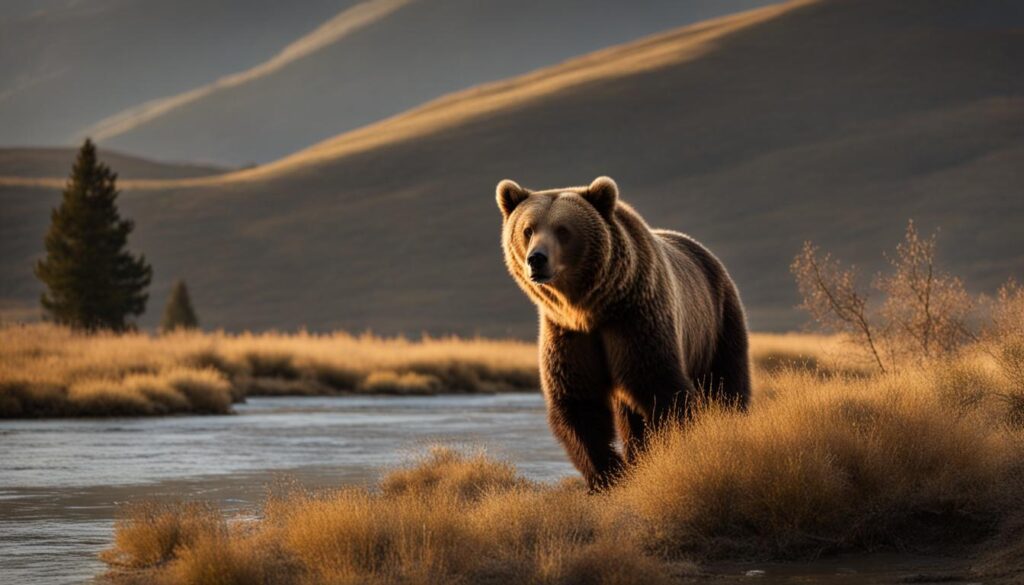
When visiting Kobuk Valley National Park, there are a variety of activities to engage in that showcase the park’s natural beauty and diverse wildlife. From hiking through rugged terrain to camping in the backcountry, visitors can experience the true wilderness of this remote park. Wildlife viewing, photography, and birdwatching opportunities abound, allowing visitors to witness the park’s unique flora and fauna up close.
One of the main attractions of Kobuk Valley National Park is its extensive trail system, which offers opportunities for hikers of all skill levels. The park does not have designated trails, allowing hikers to explore the untouched wilderness at their own pace. Whether you’re embarking on a short day hike or a multi-day trek, the park’s rugged terrain and breathtaking scenery will not disappoint.
In addition to hiking, camping is a popular activity in Kobuk Valley National Park. With a backcountry camping permit, visitors can set up camp in designated areas and immerse themselves in the tranquility of the park. Be sure to follow Leave No Trace principles and pack out all waste to help preserve the pristine environment for future generations.
Table: Wildlife Viewing Opportunities
| Animal | Best Time to Spot | Interesting Fact |
|---|---|---|
| Caribou | Fall migration | Kobuk Valley is one of the few places where you can witness the spectacle of thousands of caribou crossing the Kobuk River. |
| Grizzly Bears | Spring and fall | The park is home to a healthy population of grizzly bears, which can often be spotted along the riverbanks. |
| Arctic Foxes | Year-round | These small, elusive creatures are well adapted to the harsh Arctic environment and can be seen scurrying across the tundra. |
| Golden Eagles | Year-round | Kobuk Valley is a prime spot for birdwatching, and the majestic golden eagle is one of the many species that can be observed soaring through the sky. |
Photography enthusiasts will also find ample opportunities to capture stunning shots in Kobuk Valley National Park. Whether it’s capturing the vibrant colors of the tundra in the fall or capturing the magnificent sand dunes at sunrise, the park offers a plethora of breathtaking landscapes and wildlife moments to immortalize through the lens. Just remember to respect wildlife and natural habitats, keeping a safe distance to ensure both your safety and the preservation of the park’s ecosystem.
It’s important to note that due to the park’s remote nature, there are no designated trails or campgrounds. Visitors should come well-prepared with appropriate gear, including sturdy hiking boots, camping equipment, and a good camera for capturing those unforgettable moments. Always check the park’s website for any updates or alerts before embarking on your adventure.
Best Times to Visit Kobuk Valley National Park
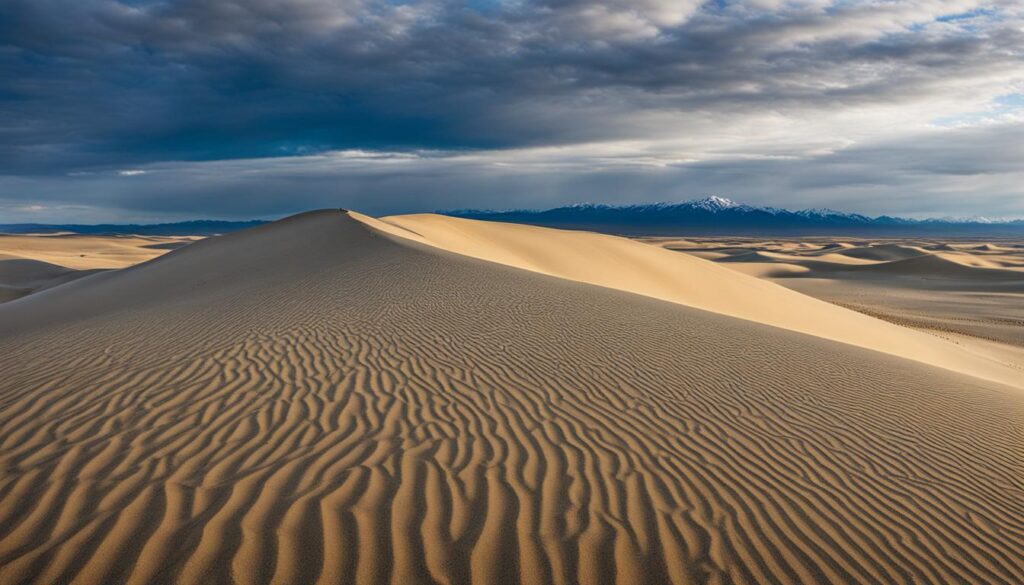
Kobuk Valley National Park offers different experiences throughout the year, each season showcasing its unique beauty. The best time to visit depends on your preferences and interests. Here’s a breakdown of the four seasons and what they offer:
Summer (June to August)
Summer in Kobuk Valley National Park brings milder temperatures, averaging from the mid-60s to mid-80s Fahrenheit. This is the peak season for visitors, as the park is more accessible during this time. The long daylight hours provide ample time to explore and enjoy outdoor activities. However, please keep in mind that summer can be crowded, so advanced planning and booking accommodations are highly recommended.
Winter (December to February)
Winter offers a unique experience in Kobuk Valley National Park. With shorter days and colder temperatures, ranging from average lows of -8°F to potential lows of -50°F, it’s a season for adventurers seeking solitude and the chance to witness the mesmerizing Northern Lights. The park’s remote location and pristine landscapes make it a perfect destination for winter enthusiasts looking to embrace the serene beauty of the Arctic.
Shoulder Seasons (Spring and Fall)
The shoulder seasons, spring (March to May) and fall (September to November), offer a quieter visit to Kobuk Valley National Park. During these transitional periods, the park’s landscapes transform, providing a unique opportunity to witness the changing colors of the tundra and boreal forests. With fewer visitors, you can immerse yourself in the tranquility of the wilderness and enjoy a more intimate connection with nature.
It is important to note that weather conditions can vary during any season, and it’s advisable to check the park’s website for updated information on weather and accessibility before planning your visit.
Hours and Operations in Kobuk Valley National Park

Kobuk Valley National Park operates under specific hours and has limited visitor services. To ensure you have the best experience during your visit, it is important to be aware of the park’s operating hours and know what services are available within the park.
Park Hours
Kobuk Valley National Park does not have set operating hours as the park is open year-round. However, it is important to note that the park does not have visitor centers or services within its boundaries. The park headquarters and visitor center are located in Kotzebue, Alaska, where you can obtain information about the park and plan your visit.
Visitor Centers and Services
While there are no visitor centers within the park, the park headquarters and visitor center in Kotzebue serve as a resource for visitors. Here, you can gather information about the park, obtain permits for backcountry camping, and get updates on park conditions. It is advisable to check the park’s website or contact the visitor center for the most up-to-date information on operating hours and services available.
Accessibility
Kobuk Valley National Park is a remote wilderness area, and accessibility can be challenging. The primary access point to the park is through Kotzebue, which has an airport serviced by commercial airlines. From there, you can arrange transportation via air taxis or other means to reach the park. Keep in mind that transportation options may be limited, especially during certain seasons, and it is essential to plan your logistics in advance.
| Hours and Services | Park Headquarters and Visitor Center |
|---|---|
| Location | Kotzebue, Alaska |
| Operating Hours | Varies, check the park’s website for the most up-to-date information |
| Services | Information, permits for backcountry camping, updates on park conditions |
RV Parks and Camping in Kobuk Valley National Park

If you’re planning a visit to Kobuk Valley National Park and looking for accommodations, it’s important to note that the park does not have designated RV parks or campgrounds. However, backcountry camping is allowed with a permit, allowing you to immerse yourself in the wilderness and experience the park’s pristine beauty.
When camping in Kobuk Valley, it is essential to come prepared with all necessary camping equipment, including a sturdy tent, sleeping gear, cooking supplies, and food. It’s also crucial to adhere to Leave No Trace principles, ensuring that you leave your campsite as you found it and minimize your impact on the environment.
While there may not be RV facilities within the park, there are limited facilities available in nearby communities for RV travelers. These communities may offer services such as dump stations, water refill stations, and fueling options. It’s advisable to plan your trip in advance and research the facilities available in the surrounding areas to ensure a comfortable and enjoyable RV experience.
Table: RV Parks and Camping Facilities in Nearby Communities
| Community | RV Parks/Campgrounds | Facilities |
|---|---|---|
| Kotzebue | Kotzebue RV Park | – Full hookups (water, electric, sewer) – Restrooms and showers – Dump station – Laundry facilities |
| Buckland | Buckland Campground | – Primitive camping spots – Pit toilets |
| Noatak | Noatak River Campground | – Primitive camping spots – Pit toilets |
Please note that availability and amenities may vary, so it’s essential to check with the respective RV parks and campgrounds for the most up-to-date information. Additionally, it’s advisable to make reservations in advance, especially during peak travel seasons, to secure a spot for your RV.
Hotels, Campsites, and Cabins near Kobuk Valley National Park
Kobuk Valley National Park, located in northwestern Alaska, offers visitors a unique and remote wilderness experience. While there are no accommodations within the park itself, there are several options available in nearby communities such as Kotzebue. Whether you prefer the comfort of a hotel, the serenity of a campsite, or the rustic charm of a cabin, there are lodging options to suit every traveler’s needs.
For those seeking modern amenities and convenience, hotels in Kotzebue provide comfortable rooms, friendly service, and easy access to the park. From budget-friendly options to upscale establishments, visitors can choose from a range of accommodations to fit their budget and preferences.
If you prefer to immerse yourself in nature, campsites near Kobuk Valley National Park are a great choice. These sites offer the opportunity to sleep under the stars and wake up to the sounds of nature. Some campsites may have basic facilities such as toilets and fire pits, allowing you to enjoy the wilderness while still having essential amenities.
For a more rustic experience, cabins near Kobuk Valley National Park provide a cozy retreat in the wilderness. These cabins offer a rustic charm and are often equipped with basic amenities such as beds, heating, and cooking facilities. Staying in a cabin allows you to fully disconnect and embrace the tranquility of the surrounding nature.
| Accommodation | Location | Features |
|---|---|---|
| Hotel A | Kotzebue | Modern amenities, convenient location |
| Hotel B | Kotzebue | Upscale establishment, stunning views |
| Campsite A | Adjacent to Kobuk Valley National Park | Basic facilities, close to nature |
| Cabin A | Surrounded by wilderness | Rustic charm, peaceful retreat |
When planning your visit to Kobuk Valley National Park, it is advisable to book accommodations in advance, especially during the peak summer season. This ensures that you have a comfortable place to stay and can make the most of your time in the park. Whether you choose a hotel, campsite, or cabin, the nearby accommodations provide a convenient base for exploring the natural wonders of Kobuk Valley.
Planning Your Visit to Kobuk Valley National Park
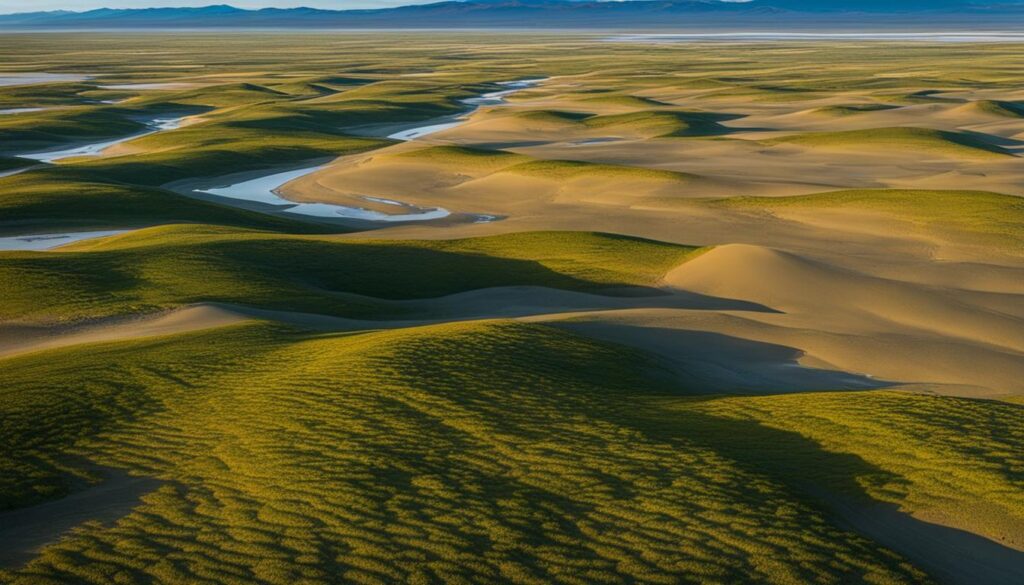
When planning a trip to Kobuk Valley National Park, it is important to consider various factors to ensure a safe and enjoyable experience. Here are some essential tips and guidelines to help you plan your visit:
Obtain Permits
In order to camp in the backcountry of Kobuk Valley National Park, visitors are required to obtain a permit. These permits can be obtained through the park’s official website or by contacting the park headquarters in advance. It is important to apply for permits well in advance to secure your desired camping dates. Additionally, make sure to familiarize yourself with the park’s rules and regulations regarding backcountry camping.
Safety Tips
As Kobuk Valley National Park is a remote and wilderness area, it is crucial to prioritize safety during your visit. Here are a few safety tips to keep in mind:
- Dress in layers and pack appropriate gear to prepare for changing weather conditions.
- Carry sufficient food, water, and emergency supplies.
- Be aware of wildlife in the area and maintain a safe distance.
- Follow designated hiking trails and avoid venturing off-trail to minimize environmental impact.
- Inform someone of your travel plans and expected return time.
Visitor Guidelines
When exploring Kobuk Valley National Park, it is important to adhere to visitor guidelines to preserve the park’s natural beauty and cultural heritage. Here are a few guidelines to keep in mind:
- Practice Leave No Trace principles by packing out all trash and minimizing your impact on the environment.
- Respect wildlife and observe from a safe distance. Do not feed, approach, or disturb them.
- Stay on designated trails to avoid damaging fragile ecosystems.
- Do not remove or disturb any natural or cultural artifacts.
- Be mindful of noise levels and respect the tranquility of the park.
By following these tips and guidelines, you can ensure a safe and respectful visit to Kobuk Valley National Park, while also experiencing the wonders of this remote wilderness.
| Permits | Safety Tips | Visitor Guidelines |
|---|---|---|
| Obtain permits for backcountry camping | Dress in layers, carry emergency supplies, be aware of wildlife | Practice Leave No Trace principles, respect wildlife, stay on designated trails |
| Apply through the park’s website or contact the park headquarters | Inform someone of your travel plans | Do not remove or disturb artifacts |
| Plan in advance to secure desired camping dates | Carry sufficient food and water | Minimize impact on the environment |
Directions to Kobuk Valley National Park
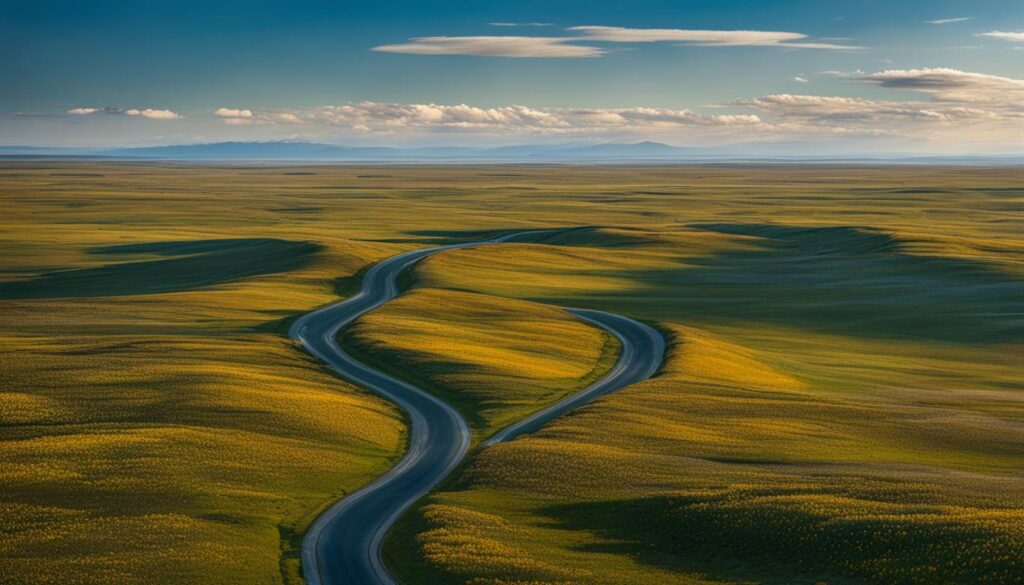
If you’re planning a visit to Kobuk Valley National Park, it’s important to know how to get there and what transportation options are available. Located in northwestern Alaska, the park does not have road access, and there are no paved roads within the park boundaries.
The primary access point to Kobuk Valley is through the town of Kotzebue, which has an airport and is serviced by commercial airlines. From Kotzebue, visitors can arrange transportation via air taxis or other means to reach the park. It’s recommended to book transportation in advance, especially during the peak summer season.
Transportation Options
When it comes to getting to Kobuk Valley National Park, there are a few transportation options to consider:
- Commercial Airlines: The town of Kotzebue has an airport that is serviced by commercial airlines. Visitors can fly into Kotzebue from various locations in Alaska and other parts of the United States.
- Air Taxis: Air taxis are a popular mode of transportation for reaching remote destinations like Kobuk Valley. These small, private planes can be chartered to fly into the park from Kotzebue or other nearby communities.
- Boat: The Kobuk River offers an alternative transportation option for accessing the park. Visitors can arrange for boat transportation, either by hiring a guide or operating their own vessel, to navigate the river and reach Kobuk Valley.
Access and Directions
Once you’ve arrived in Kotzebue, you’ll need to arrange transportation to Kobuk Valley National Park. The park does not have designated roads or trails, so it’s essential to have a plan in place.
| Access Point | Directions |
|---|---|
| Kotzebue | From Kotzebue, you can arrange transportation via air taxis or boat to reach Kobuk Valley National Park. |
| Other Nearby Communities | If you’re coming from another nearby community, such as Ambler or Shungnak, you can also arrange transportation to Kobuk Valley via air taxis or boat. |
It’s important to note that transportation options may be limited and weather-dependent, so it’s recommended to plan your trip well in advance and check for any updates or restrictions before your departure.
History and Significance of Kobuk Valley National Park
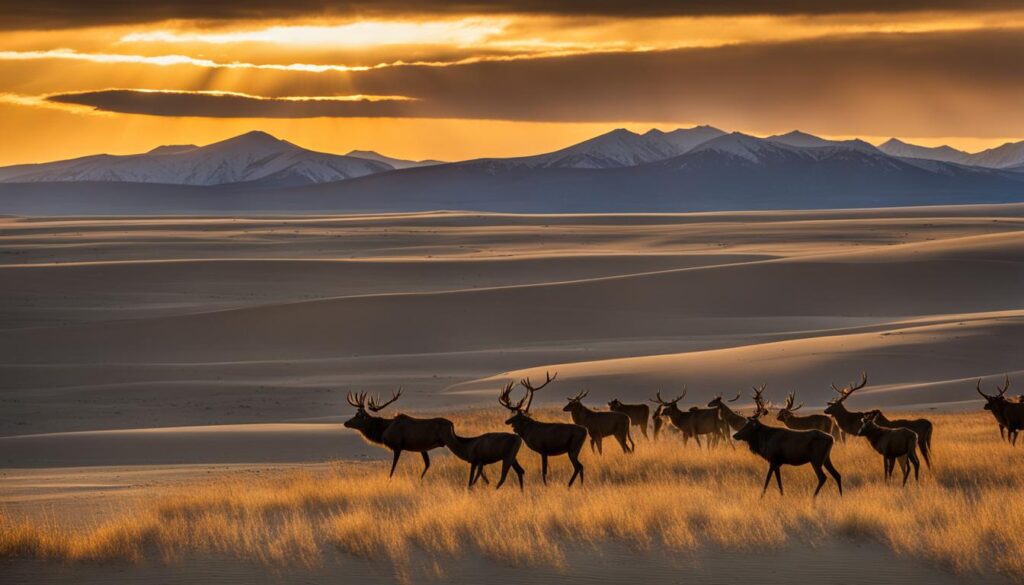
Kobuk Valley National Park holds a significant place in the history and preservation efforts of Alaska’s wilderness. The park’s establishment in 1980 aimed to protect the diverse ecosystems and cultural heritage of the region. The area has been home to indigenous peoples for thousands of years, and the park contains valuable archaeological sites that provide insight into their way of life.
The cultural significance of Kobuk Valley National Park cannot be understated. It is a place where ancient traditions and practices have been passed down through generations, leaving behind a rich tapestry of history. The park’s archaeological sites, such as Onion Portage, hold great importance as crossroads of various indigenous cultures, where caribou have been traversing the river for centuries.
Preservation efforts within Kobuk Valley National Park are vital in maintaining the delicate balance between nature and human impact. The park’s vast landscapes of boreal forests, tundra, and sand dunes are home to a wide array of plant and animal species that rely on the park’s protection for their survival. By preserving this unique ecosystem, the park plays a crucial role in safeguarding biodiversity and maintaining the ecological integrity of the region.
Table: Key Historical and Cultural Sites in Kobuk Valley National Park
| Site | Description |
|---|---|
| Onion Portage | An archaeological site where caribou have crossed the river for thousands of years, representing a significant cultural and historical crossing point. |
| Kibuk River | A vital waterway that has served as an essential resource for indigenous peoples, offering opportunities for fishing and boating. |
| Great Kobuk Sand Dunes | One of the largest active sand dune systems in North America, providing a unique geological and ecological feature within the park. |
Understanding the history, cultural significance, and preservation efforts of Kobuk Valley National Park enhances the visitor’s experience and fosters greater appreciation for the park’s natural and cultural resources. It is an opportunity to connect with the past, gain insight into the indigenous cultures that have thrived in the region, and recognize the importance of preserving this wilderness for future generations.
Conclusion
Kobuk Valley National Park is a hidden gem that offers a truly unique and remote wilderness experience. From its diverse landscapes to its rich cultural heritage, the park has something for everyone. Whether you are a nature enthusiast or a history buff, there is plenty to explore and discover in Kobuk Valley.
When planning your visit to the park, it is important to consider the weather conditions. The park experiences varying weather throughout the year, from cold winters to mild summers. Be sure to pack appropriate clothing and gear to stay comfortable and safe during your trip.
With its key attractions and activities, Kobuk Valley National Park will not disappoint. From the magnificent Great Kobuk Sand Dunes to the archaeological site of Onion Portage, there is no shortage of breathtaking sights to see. Hiking, camping, wildlife viewing, and birdwatching are just a few of the activities that visitors can enjoy in this pristine wilderness. So make sure to plan ahead and make the most of your time in Kobuk Valley.
In conclusion, a visit to Kobuk Valley National Park is an adventure like no other. By planning ahead, respecting the park’s guidelines, and being prepared for the weather, you can fully immerse yourself in the beauty and magic of this remarkable place. So pack your bags, lace up your boots, and get ready to explore all that Kobuk Valley National Park has to offer.
FAQ
What are the typical weather conditions in Kobuk Valley National Park?
Kobuk Valley National Park experiences varying weather conditions throughout the year. Summer temperatures range from the mid-60s to mid-80s Fahrenheit, with some days reaching 85°F in July. January sees average lows of -8°F, with possible lows of -50°F. Visitors should be prepared for snow, near-freezing temperatures, and periods of clouds, wind, and rain in the summer. Wind speeds average 5 to 10 mph, but can reach 20 to 30 mph during storms.
What should I wear and bring to Kobuk Valley National Park?
It is essential to dress in warm layers, wear sturdy hiking boots, and use high-quality rain gear. Given the risk of hypothermia and exposure, it is crucial to come prepared with appropriate clothing and equipment.
When is the best time to visit Kobuk Valley National Park?
The best time to visit Kobuk Valley National Park depends on personal preferences and interests. Summer (June to August) offers milder temperatures but can be crowded. Winter (December to February) provides a unique experience with shorter days and the chance to witness the Northern Lights. Shoulder seasons (spring and fall) offer a quieter visit with changing landscapes and fewer visitors.
Does Kobuk Valley National Park have visitor centers or services within the park?
No, Kobuk Valley National Park does not have visitor centers or services within the park. The park headquarters and visitor center are located in Kotzebue, Alaska.
Are there designated RV parks or campgrounds in Kobuk Valley National Park?
No, Kobuk Valley National Park does not have designated RV parks or campgrounds. However, backcountry camping is allowed with a permit. There are limited facilities available in nearby communities for RV travelers.
Are there accommodations available near Kobuk Valley National Park?
Yes, there are several options available in nearby communities such as Kotzebue. These options include hotels, campsites, and cabins.
What should I consider when planning a visit to Kobuk Valley National Park?
Planning a visit to Kobuk Valley National Park requires careful consideration. Visitors should research and plan their trip in advance, obtain any necessary permits for backcountry camping, and be prepared for changing weather conditions, wildlife encounters, and the park’s remote nature. Following visitor guidelines and practicing Leave No Trace principles is crucial to preserving the park’s pristine environment.
How do I get to Kobuk Valley National Park?
Kobuk Valley National Park does not have road access. The primary access point is through the town of Kotzebue, which has an airport and is serviced by commercial airlines. From Kotzebue, visitors can arrange transportation via air taxis or other means to reach the park.
What is the significance of Kobuk Valley National Park?
Kobuk Valley National Park has a rich history and cultural significance. The area has been inhabited by indigenous peoples for thousands of years, and the park holds archaeological sites that provide insight into their way of life. The park’s establishment in 1980 aimed to preserve the diverse ecosystems and cultural heritage of the region.

